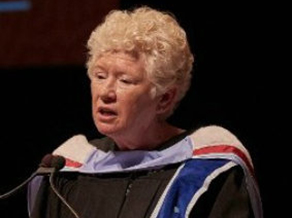
The Lyme Disease Pandemic: Why Athletic Therapists Must Be in the Know
Anne Hartley will be hosting a cutting-edge workshop about the Lyme disease pandemic in Canada. Over the last few years, the north-eastern states of the USA saw a 320% increase in Lyme disease, while north-central states saw a 250% increase. These increases are attributed to global warming and the associated spread of ticks, which are carried by birds, deer, and more recently, mice.
The ticks can be found on fields (soccer, football, rugby, etc.) and in bushes (cycling, cross training, golf). Early detection and removal of the ticks is critical, as is knowing where to send the patient and how the disease should be treated.
How is this relevant to ATs?
Lyme disease is caused by very sophisticated parasitic bacteria. It has an acute phase, where it can be more readily identified and treated, and a much more insidious chronic phase, where diagnosis and treatment is more difficult. In the chronic phase, it can mimic many different conditions that Athletic Therapists see in their every day practices.
Symptoms include:
- Swollen joints, including hands, knees, ankles and hips
- Negative effects on our neural system, appearing like Bell’s palsy, carpal tunnel, cervical neuritis, or ulnar neuritis
- Negative effects on the brain, which causes limb tingling and numbness similar to multiple sclerosis
- Chronic fatigue, fibromyalgia, and mental fogginess
- Attacks on the collagen and muscles in the body, causing muscle cramping and facial restrictions
- In some patients, it affects the heart causing cardiac arrhythmias and cardiitis
Why educate yourself on Lyme Disease?
As a pandemic that can have far reaching consequences if it goes unchecked, Athletic Therapists must be able to recognize it during the history taking portion of an assessment and have the knowledge to properly advise patients on assessment and treatment.
This workshop is designed to help you in prevention, assessment, differential diagnosis, and treatment of Lyme disease. Talking points include knowledge sharing from Lyme literate doctors, antibiotic guidelines in Canada, and assistance for medical referrals for this disease. The areas of the country where the tick is endemic will be identified, for therapists who travel to different parts of Canada.